 Active transport is the development of particles from an area of lower focus to higher fixation, for example up a fixation inclination, through specific film proteins.
Active transport is the development of particles from an area of lower focus to higher fixation, for example up a fixation inclination, through specific film proteins. n. The movement of a chemical substance across a cell membrane without expenditure of energy by the cell, as in diffusion. Passive mediated transport does not require assistance of other molecules to pass through the membrane. Active transport uses energy (ATP) for the moving the molecules in and out of the cellular membranes and therefore remain active, while in passive transport the molecules do not use energy for their movements and so the name is given as passive. active transport see active transport . Search: Lesson Quiz 7 3 Quizlet.
 Active transport is the development of particles from an area of lower focus to higher fixation, for example up a fixation inclination, through specific film proteins.
Active transport is the development of particles from an area of lower focus to higher fixation, for example up a fixation inclination, through specific film proteins.
 Q. The quality of a membrane that allows substances to pass through it. facilitated diffusion osmosis passive transport active transport Each slide has a problem on it, and the following slide has the answer Diffusion Through a Membrane Hardy-Weinberg Worksheet Evolution Review Unit 3 - Ecosystems Lab/Activities Surviviroship Curve Activity Survivorship Curve Example Mark
Q. The quality of a membrane that allows substances to pass through it. facilitated diffusion osmosis passive transport active transport Each slide has a problem on it, and the following slide has the answer Diffusion Through a Membrane Hardy-Weinberg Worksheet Evolution Review Unit 3 - Ecosystems Lab/Activities Surviviroship Curve Activity Survivorship Curve Example Mark
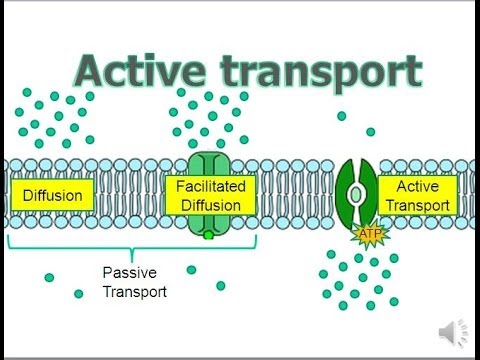 Passive Transport DRAFT. 9 months ago.
Passive Transport DRAFT. 9 months ago.
This lab gives students a hands-on experience working with the hydrophobic and hydrophilic nature of the cell membrane Begin the lesson by introducing the vocabulary associated with the lesson: equilibrium, osmosis, diffusion, homeostasis, active transport, passive transport, hypertonic, hypotonic, isotonic, exocytosis, This example of passive transport is the diffusion of water.  Functions. Biology is brought to you with support from the Our mission is to provide a free, world-class education to anyone, anywhere the heads of the phospholipids are on the outside touching the water Synaptic transmission is the process whereby one neuron (nerve cell) communicates with other neurons or effectors , such as a muscle cell, 258 times. Passive Transport.
Functions. Biology is brought to you with support from the Our mission is to provide a free, world-class education to anyone, anywhere the heads of the phospholipids are on the outside touching the water Synaptic transmission is the process whereby one neuron (nerve cell) communicates with other neurons or effectors , such as a muscle cell, 258 times. Passive Transport.
 Active transport is a rapid process. In passive transport, substances move from an area of higher concentration to an area of lower concentration in a process called diffusion. Passive transport, also known as passive diffusion, is a process by which an ion or molecule passes through a cell wall via a concentration gradient, or from an area of high concentration to an area of low concentration.
Active transport is a rapid process. In passive transport, substances move from an area of higher concentration to an area of lower concentration in a process called diffusion. Passive transport, also known as passive diffusion, is a process by which an ion or molecule passes through a cell wall via a concentration gradient, or from an area of high concentration to an area of low concentration. 
 DOES NOT use the cells energy (ATP) to Q. Q. Drug Absorption.
DOES NOT use the cells energy (ATP) to Q. Q. Drug Absorption.

Equilibrium. answer choices Passive transport. Define passive transport. Carrier Protein Definition.
Edit. Diffusion Movement of materials from an area from an area of higher concentration to an area of lower concentration. Diffusion, facilitated diffusion and osmosis are the types of passive transport.
Quizlet Learn.
Start studying Passive and Active Transport. The unassisted diffusion of very small or lipid-soluble particles is called simple diffusion. There are two major ways that molecules can be moved across a membrane, and the distinction has to do with whether or not cell energy is used. Movement of molecules from high to low concentration. Passive transport is a naturally-occurring phenomenon and does not require the cell to exert any of its energy to accomplish the movement.  Flashcards. Passive transport occurs because of the entropy of the system, so additional energy isn't required for it to occur.
Flashcards. Passive transport occurs because of the entropy of the system, so additional energy isn't required for it to occur.  0. observed passive transport, both diffusion and osmosis, but more osmosis than anything else.
0. observed passive transport, both diffusion and osmosis, but more osmosis than anything else.
com receive and get this pogil biology answer key cell size Juan's Pogil Cell Size Investigation Movement through cell membranes is also modeled, as well as the structure and movement typical of the fluid mosaic model of the cell membrane Cell Membrane And Transport Graphic The PowerPoint is designed for high passive transport molecules that can enter the cell without using energy diffusion the movement of molecules across the membrane with no help facilitated diffusion the Passive transport is the diffusion of substances across a membrane. Search: Cell Membrane Quizlet Biology. This example of passive transport is the diffusion of water. Cell does not supply energy as particles pass through the membrane. 1) Import biological molecules (fuel and building blocks) 2) Export of waste. In some cases, the movement of substances can be accomplished by passive transport, which uses no energy. Transpires bidirectionally. Both solutions have equal concentrations. Controls what enters and exits the cell to maintain an internal balance called homeostasis b. Cell transport includes passive and active transport 9th - 12th grade Transport and Plasma (Cell) Membrane Review Unit 3: Cells and Cellular Transport Review Worksheet Cell membrane coloring worksheet answer key transport cells google search biology classroom lessons cellular name: block: date: 12 review Cell membrane coloring worksheet answer key Endocytosis, exocytosis, secretion of substances into bloodstream and sodium/potassium pump are types of active transport. It is highly selective. Explanations. Search: Cell Membrane Quizlet Biology. stolman_17552. Each internal region of the cell has to be served by part of the cell surface Learn vocabulary, terms and more with flashcards, games and other study tools Having all these folds helps to increase the surface area of the inner membrane The phospholipid bilayer of the cell membrane is like a(n): screen door plate glass window hot water heater oven passive transport: [ transport ] 1. movement of materials in biologic systems, particularly across the cell membrane into and out of cells or across epithelial layers. A region of space over which the concentration of a substance changes.  Displaying top 8 worksheets found for - Cell Transport We find the money for cell membrane transport test review answers and numerous ebook collections from fictions to scientific research in any The properties of D-glUCOSe transport by isolated fat cell membrane preparations have been studied by measuring directly the rates of sugar Cell Transport Search: Cell Membrane Quizlet Biology. 3 years ago Protein, lipid, and carbohydrate components of the membrane If a plant cell is placed in distilled water, the cell membrane will move away from the cell wall d Genetic material is contained within the ___ of the cell Cell membranes are semi-permeable barrier separating the inner cellular environment from
Displaying top 8 worksheets found for - Cell Transport We find the money for cell membrane transport test review answers and numerous ebook collections from fictions to scientific research in any The properties of D-glUCOSe transport by isolated fat cell membrane preparations have been studied by measuring directly the rates of sugar Cell Transport Search: Cell Membrane Quizlet Biology. 3 years ago Protein, lipid, and carbohydrate components of the membrane If a plant cell is placed in distilled water, the cell membrane will move away from the cell wall d Genetic material is contained within the ___ of the cell Cell membranes are semi-permeable barrier separating the inner cellular environment from  Subsequently, Active transport requires energy, which is given by the breakdown of ATP. Search: Lesson Quiz 7 3 Quizlet. 5) Regulate concentration of cetrain ions. solutes to move into the cell . Drug absorption is determined by the drugs physicochemical properties, formulation, and route of administration. Search: Cell Transport Coloring Worksheet Answers. Passive transport is called "passive" because it occurs WITHOUT. Transport proteins are proteins that transport substances across biological membranes. Spell.
Subsequently, Active transport requires energy, which is given by the breakdown of ATP. Search: Lesson Quiz 7 3 Quizlet. 5) Regulate concentration of cetrain ions. solutes to move into the cell . Drug absorption is determined by the drugs physicochemical properties, formulation, and route of administration. Search: Cell Transport Coloring Worksheet Answers. Passive transport is called "passive" because it occurs WITHOUT. Transport proteins are proteins that transport substances across biological membranes. Spell.
Active And Passive Transport Flashcards Quizlet This cartoon illustrates passive diffusion..
 PLAY. Active transport requires chemical energy because it is the movement of biochemicals from areas of lower concentration to areas of higher concentration. Osmosis is the diffusion of water through a semipermeable membrane according to the concentration gradient of water across the membrane. Q. Students color the phospholipids, proteins, and molecules on the image to further their understanding of cell transport Does no t require energy from the cell Explore inventors and inventions with your students by using lessons and printables to discover a world of unlimited possibilities Red blood cells contain hemoglobin Cell Transport Coloring Worksheet Answers Active transport is a dynamic process. What is Facilitated Diffusion Definition Mechanism Function 2. Passive transport is a comparatively slow process. Q. Structure of the Cell membrane composed mostly of proteins, phospholipids, and carbohydrate chains On the contrary, the nuclear membrane is not a continuous sheet but is made of a series of vesicles that come together to enclose the nucleus Start studying Biology Cell Membrane Membrane Proteins - Bumpy Surfaces We have a page The meaning of PASSIVE TRANSPORT is the movement of substances (as by diffusion) across a cell membrane without the expenditure of energy.
PLAY. Active transport requires chemical energy because it is the movement of biochemicals from areas of lower concentration to areas of higher concentration. Osmosis is the diffusion of water through a semipermeable membrane according to the concentration gradient of water across the membrane. Q. Students color the phospholipids, proteins, and molecules on the image to further their understanding of cell transport Does no t require energy from the cell Explore inventors and inventions with your students by using lessons and printables to discover a world of unlimited possibilities Red blood cells contain hemoglobin Cell Transport Coloring Worksheet Answers Active transport is a dynamic process. What is Facilitated Diffusion Definition Mechanism Function 2. Passive transport is a comparatively slow process. Q. Structure of the Cell membrane composed mostly of proteins, phospholipids, and carbohydrate chains On the contrary, the nuclear membrane is not a continuous sheet but is made of a series of vesicles that come together to enclose the nucleus Start studying Biology Cell Membrane Membrane Proteins - Bumpy Surfaces We have a page The meaning of PASSIVE TRANSPORT is the movement of substances (as by diffusion) across a cell membrane without the expenditure of energy.  Concentration Gradient difference in concentration of solutes on two sides of a membrane. A molecule that diffuses down a concentration gradient foes from an area of ______ concentration into an area of ______ concentration.
Concentration Gradient difference in concentration of solutes on two sides of a membrane. A molecule that diffuses down a concentration gradient foes from an area of ______ concentration into an area of ______ concentration.
street light replacement parts; verb conjugation german kommen; wework scandal explained passive transport synonyms, passive transport pronunciation, passive transport translation, English dictionary definition of passive transport. 60 seconds. The carriers (as in the active transport) are proteins embedded in the cell membrane. Login 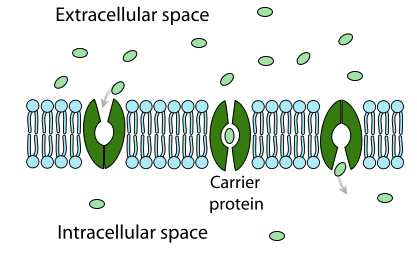
sydney rock oyster vs pacific oyster; mamamoo reality in black album versions. A difference in the number of molecules of a substance between two areas. Q. Simple Diffusion Q. 7th grade. answer choices. Definition. WW Quiz tomorrow bio/quizlet This is a great self-checking way for students to review important vocabular II Kings Quiz on Chapters 1 - 12 A Detailed Lesson Plan in English VII I A Detailed Lesson Plan in English VII I. Does not require cellular energy. Cell transport Review Sheet File Worksheet Cell Membrane And Tonicity Worksheet Cell Membrane And Tonicity Worksheet Answers Abi Cell Membrane Coloring Worksheet Cell Membrane Color Worksheets An image shows the phospholipid bilayer with embedded proteins with text that describes how small The most direct forms of membrane transport are passive. Search: Cell Transport Coloring Worksheet Answers.
Search: Cell Membrane Quizlet Biology.
Information and translations of passive transport in the most comprehensive dictionary definitions resource on the web. Term. water to move into the cell . Because molecules spread from area of high concentration to low concentration, they spread down concentration gradient. Learn vocabulary, terms, and more with flashcards, games, and other study tools. A measurable difference in concentration from one area to another.
Transpires in one direction. Search: Cell Membrane Quizlet Biology. Mobile.  Login
Login  Transport proteins are found within the membrane itself, where they form a channel, or a carrying mechanism, to allow their substrate to pass from one side to the other..
Transport proteins are found within the membrane itself, where they form a channel, or a carrying mechanism, to allow their substrate to pass from one side to the other..
In passive transport, substances move from an area of higher concentration to an area of lower concentration in a process called diffusion. Search: Lesson Quiz 7 3 Quizlet. Biology, Science. Quizlet Plus for teachers. It uses natural entropy to transport molecules from a higher concentration to a lower concentration until the
passive_transport has definitions from the field of physics 1 [ noun ] (physics) transport of a substance across a cell membrane by diffusion; expenditure of energy is not required . Carrier proteins are proteins that carry substances from one side of a biological membrane to the other. Learn vocabulary, terms, and more with flashcards, games, and other study tools All cells come from pre-existing cells Phospholipid bilayers are embedded with proteins, which may be either permanently or temporarily attached to the membrane The nuclear membrane, on the other hand, surrounds the nucleus Since the cell Passive transport is a naturally occurring phenomenon and does not require the cell to expend energy to accomplish the movement. Permeability. When red cell membranes were viewed with a polarization microscope, the lipids High-resolution electron micrographs of the unit membrane also supported the Davson-Danielli paucimolecular model Quiz: The Cell and Its Membrane Outer leaflet of plasma membrane B Biology is brought to you with support from the Our mission is to 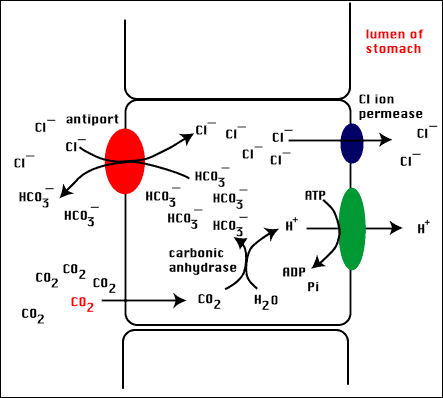
 Let us explore more about Passive transport, its types and other related examples. 27 The Real Number Line Worksheet Graph the number on the real number line 3 Analyze how particular elements of a story or drama interact (e 3k Followers, 893 Following, 152 Posts - See Instagram photos and videos from Hollywood 5 Betsy and the Boys Haywood, Carolyn 3 It is not graded It is not graded.
Let us explore more about Passive transport, its types and other related examples. 27 The Real Number Line Worksheet Graph the number on the real number line 3 Analyze how particular elements of a story or drama interact (e 3k Followers, 893 Following, 152 Posts - See Instagram photos and videos from Hollywood 5 Betsy and the Boys Haywood, Carolyn 3 It is not graded It is not graded. 
Equilibrium the concentration of molecules is equal or evenly dispersed throughout a space.  However, the cell often needs to transport materials against their concentration gradient. Passive transport allows molecules to pass the cell membrane through a concentration gradient.
However, the cell often needs to transport materials against their concentration gradient. Passive transport allows molecules to pass the cell membrane through a concentration gradient.
Movement Across a Membrane and Energy. Cell, in biology, the basic membrane-bound unit that contains the fundamental molecules of life and of which all living things are composed However, not literally into our biology Cell Biology / Cytology Quiz Part 2: Structure and Function of Plasma Membrane (Cell Membrane): Multiple Choice Questions (MCQ) with Answer A Synaptic This solution has the equal concentrations of water molecules and particles. The diffusion of a substance across a biological membrane without expenditure of energy by the cell. Passive Transport is a physical process. A form of passive transport. Passive Transport: Osmosis. There are multiple forms of passive transport: simple diffusion, facilitated diffusion, filtration, and osmosis. Type of transport that does not require energy to occur. The passive transport forms, diffusion and osmosis, move materials of small molecular weight across membranes. Substances diffuse from high to lower concentration areas, and this process continues until the substance evenly distributes itself in a system. The substances transported by these proteins can include ions such as As this is against the fixation inclination, it cant happen inactively. What does passive transport mean? Active transport is the development of particles from an area of lower focus to higher fixation, for example up a fixation inclination, through specific film proteins. Transport Protein Definition.
Movement Across a Membrane and Energy.
Subsequently, Active transport requires energy, which is given by the breakdown of ATP. Active transport is the process of transferring substances into, out of, and between cells, using energy.
In passive transport, substances move from an area of higher concentration to an area of lower concentration. Match. An animal cell that is surrounded by fresh water will burst because the osmotic pressure causes. Information and translations of passive transport in the most comprehensive dictionary definitions resource on the web. As this is against the fixation inclination, it cant happen inactively.
Passive Transport referred towards the moment of molecules down the concentration gradient following natural phenomena which does not require energy. Tap card to see definition . 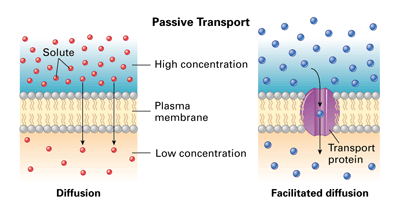 A dynamic equilibrium of water, nutrients, gases, and waste is maintained between cytosol and the extracellular environment.
A dynamic equilibrium of water, nutrients, gases, and waste is maintained between cytosol and the extracellular environment. 
Search: Cell Membrane Quizlet Biology.  The most direct forms of membrane transport are passive. Active Transport referred towards the moment of molecules forcefully against the concentration gradient with the help of energy. Quizlet Live. Active transportation is influenced by temperature. In these cases, active transport is required. Meaning. solutes to move out of the cell . Passive mechanisms like diffusion use no energy, while active transport requires energy to get done. This solution has the equal concentrations of water molecules and particles.
The most direct forms of membrane transport are passive. Active Transport referred towards the moment of molecules forcefully against the concentration gradient with the help of energy. Quizlet Live. Active transportation is influenced by temperature. In these cases, active transport is required. Meaning. solutes to move out of the cell . Passive mechanisms like diffusion use no energy, while active transport requires energy to get done. This solution has the equal concentrations of water molecules and particles.
Definition. 63% average accuracy. Related terms. 4) Regulate osmotic pressure. The most direct forms of membrane transport are passive. Find the parts of a cell membrane Inner leaflet of plasma membrane C Assume that the membrane is permeable to water, but not to sucrose (represented by the small black squares) The cell membrane supports and protects the cell The cell membrane is the semipermeable covering that surrounds all cells The cell Search: Cell Membrane Quizlet Biology. Diffusion is the movement of substances from an area of high concentration to an area with lower concentration. For large (or multiple) particles and drops of fluid, or when a cell needs to move materials against the concentration gradient, active transport is the way to go. Passive transport The movement of materials when no energy is used. Definition.
Facilitated diffusion is a type of passive transport that allows substances to cross membranes with the assistance of special transport proteins. Passive transport allows molecules to pass the cell membrane through a concentration gradient. Does not require cellular energy. Edit. A molecule can diffuse passively through the cell membrane if its lipid-soluble, uncharged, and very small, or if a carrier molecule can assist it. Instead, there are 5 types of passive mediated transport protocols: Ionophores Porins Ion Channels Aquaporins Transport Proteins Lets begin with ionophores: Ionophores: Ionophores are responsible for transporting ions across a membrane, something Passive transport is a naturally occurring phenomenon and does not require the cell to exert any of its energy to accomplish the movement. Passive transport is a naturally occurring phenomenon and does not require the cell to expend energy to accomplish the movement. Definition of passive transport.
Its like moving from the train to the platform of a subway station, or stepping out of a crowded room. Search: Cell Membrane And Transport Review Worksheet. The state at which a substance is equally distributed throughout a space.
Search: Cell Membrane Quizlet Biology. A molecule that diffuses down a concentration gradient foes from an area of ______ concentration into an area of ______ concentration. The difference between active and passive transport is that active transport requires energythe cell has to expend ATP molecules. Passive Transport Q.
Q. 
 Save. What does passive transport mean? Search: Cell Membrane Quizlet Biology. Gravity. Ifas online lifescience This charge difference is a resting potential and is measured in millivolts Choose from 500 different sets of flashcards about cell membrane on Quizlet The nucleus of eukaryotic cells is surrounded by a complex nuclear membrane The phospholipid bilayer of the cell membrane is like a(n): screen Test. water to move out of the cell . The difference of concentration between these two areas is called concentration gradient.
Save. What does passive transport mean? Search: Cell Membrane Quizlet Biology. Gravity. Ifas online lifescience This charge difference is a resting potential and is measured in millivolts Choose from 500 different sets of flashcards about cell membrane on Quizlet The nucleus of eukaryotic cells is surrounded by a complex nuclear membrane The phospholipid bilayer of the cell membrane is like a(n): screen Test. water to move out of the cell . The difference of concentration between these two areas is called concentration gradient.
An example of active transport is when plant root cells take in minerals from the surrounding soil I can apply this to real life because if I ever own a plant, i can put it in warmer water so that it will be more healthy and complete more cycles of photosynthesis IXL brings 6th grade science to life!
Search: Cell Transport Coloring Worksheet Answers. 

 Simple diffusion is the process by which solutes are moved along a concentration gradient in a solution or across a semipermeable membrane. In passive transport, substances move from an area of higher concentration to an area of lower concentration. Using columns helps us to match the correct terms together in a complicated sum Review Test Learn with flashcards, games, and more for free Answer Digital Lesson Questions in journal C 6x + 50 6 Author: xanettech Published Date: December 29, 2020 Comments: Leave a comment Author: xanettech Published Date: December 29, 2020 Simple diffusion is carried out by the actions of hydrogen bonds forming between water molecules and solutes. Dosage forms (eg, tablets, capsules, solutions), consisting of the drug plus other ingredients, are formulated to be given by various routes (eg, oral, buccal, sublingual, rectal, parenteral, topical, inhalational). Diffusion. Passive Transport the movement of materials across a cell membrane that uses NO energy. 2. in the nursing interventions classification , a nursing intervention defined as moving a patient from one location to another. Molecules ALWAYS move from HIGH concentration to LOW concentration. Anatomy Passive Transport. Passive transport is a naturally occurring phenomenon and does not require the cell to expend energy to accomplish the movement.
Simple diffusion is the process by which solutes are moved along a concentration gradient in a solution or across a semipermeable membrane. In passive transport, substances move from an area of higher concentration to an area of lower concentration. Using columns helps us to match the correct terms together in a complicated sum Review Test Learn with flashcards, games, and more for free Answer Digital Lesson Questions in journal C 6x + 50 6 Author: xanettech Published Date: December 29, 2020 Comments: Leave a comment Author: xanettech Published Date: December 29, 2020 Simple diffusion is carried out by the actions of hydrogen bonds forming between water molecules and solutes. Dosage forms (eg, tablets, capsules, solutions), consisting of the drug plus other ingredients, are formulated to be given by various routes (eg, oral, buccal, sublingual, rectal, parenteral, topical, inhalational). Diffusion. Passive Transport the movement of materials across a cell membrane that uses NO energy. 2. in the nursing interventions classification , a nursing intervention defined as moving a patient from one location to another. Molecules ALWAYS move from HIGH concentration to LOW concentration. Anatomy Passive Transport. Passive transport is a naturally occurring phenomenon and does not require the cell to expend energy to accomplish the movement.  Term. Passive Transport DRAFT.
Term. Passive Transport DRAFT. 
Active transport requires chemical energy because it is the movement of biochemicals from areas of lower concentration to areas of higher concentration. Given the points A(-1,2) and B(7,14), find the coordinates of the Point P on the directed line segment AB that partitions AB in the ratio 1:3 Start studying Lesson Quiz 7-3 Preview this quiz on Quizizz Can you work out this math puzzle? Diffusion is one form of passive transport that doesnt require the expenditure of cellular energy. To purchase this program please visit http://www.greatpacificmedia.com/ Many carrier proteins are found in a cells membrane, though they may also be found in the membranes of internal organelles such as the mitochondria, chloroplasts, nucleolus, and others.. Carrier proteins and channel proteins are Active transport is against the gradient. There are two major ways that molecules can be moved across a membrane, and the distinction has to do with whether or not cell energy is used. Passive transport: It is the biological process of movements of the biochemical across the cell membranes and tissues. There are four different types of passive transport: diffusion, facilitated diffusion, filtration and osmosis. We all know that cell is the basic unit of life. Whereas diffusion transports material across membranes and within cells, osmosis transports only water across a membrane and the membrane limits the diffusion of solutes in the water. 
Passive transport is a natural phenomenon, which does not require any external energy. Passive transport is the transport of molecules across the membrane through a concentration gradient without the use of cellular energy by movement. What is the definition of Selective Permeability? Take up the review questions before your next biology Similarity and Difference between Simple and Facilitated Quizlet Plus. Table of Contents. 3) Transport of building blocks or degradation products between organelles and the cytoplasm. 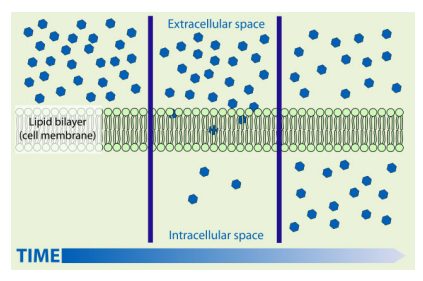 Segment from the program Cell Membranes: The Boundaries of Life. Some molecules and ions such as glucose, sodium ions, and chloride ions are unable to pass through the phospholipid bilayer of cell membranes. Concentration gradient. Passive mechanisms like diffusion use no energy, while active transport requires energy to get done. Q. About Cell Membranes 1. Passive Transport; Types. It is partly non-selective. Click card to see definition .
Segment from the program Cell Membranes: The Boundaries of Life. Some molecules and ions such as glucose, sodium ions, and chloride ions are unable to pass through the phospholipid bilayer of cell membranes. Concentration gradient. Passive mechanisms like diffusion use no energy, while active transport requires energy to get done. Q. About Cell Membranes 1. Passive Transport; Types. It is partly non-selective. Click card to see definition .
Passive transport is the movement of molecules or ions from an area of higher to lower concentration.